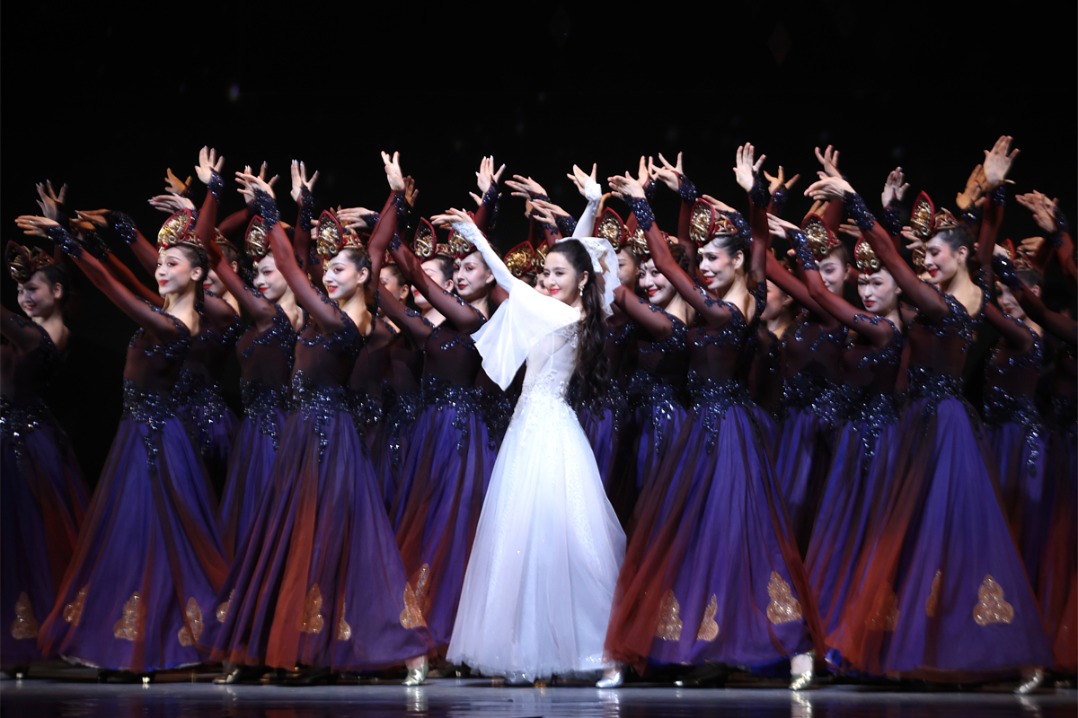Following the footprints of tiger culture in a county

TAIYUAN-Licheng county in Shanxi province, where the ancient Li state of the Shang Dynasty (c.16th century-11th century BC) was located, has received widespread attention due to its time-honored culture during the Year of the Tiger.
People of the ancient state worshipped tigers and, despite the vicissitudes of time, that tradition has been kept alive in the county by the 134,000 or so residents that live there today, with Lihou Tiger, also called bulaohu (cloth tiger) in Chinese.
Kristina Radchenko from Russia, who works in nearby Changzhi city, has been curious about the tiger culture in Licheng, and embarked on a trip to the county just before Spring Festival. A local tiger museum was Radchenko's first stop. At its doorstep, she was attracted by a photo of a jade tiger with sharp claws and an open mouth, as if it was hunting.
An employee of the museum told her that the jade tiger dates back some 3,000 years. Its excavation in 2006 in a nearby area further supported the existence of the ancient state.
She fell in love with a row of handmade cloth tigers inside the museum, which are the most famous representation of Licheng's tiger culture, integrating traditional paper-cutting, embroidery and other art forms.
With big, round eyes, colorful patterns on the head, and a chubby body, the Lihou Tiger blends its majesty with cuteness, making it very popular, especially among children.
The displays in the museum unveil the evolution of Lihou Tiger craftsmanship. Radchenko notices that their appearance has become simpler and more fashionable in modern times. The filling has also changed from sawdust to cotton.
In 1998, also a Year of the Tiger, the Lihou Tiger dominated the zodiac stamps released by China Post, giving rise to its fame in China and beyond. Ten years later, the Lihou Tiger was listed as part of China's Intangible Cultural Heritage.
Since then, orders of the toy and related products started to pour into Licheng, prompting more folk artists and workers to join the industry.
Li Xiaomei is an inheritor of the Lihou Tiger craftsmanship. In Li's studio, Radchenko found an array of hats and shoes with tiger head patterns, and they are all made for children.
"Lihou Tigers are our mascots. We hope our children will grow as strong and brave as tigers," says Li, adding that the custom is deeply rooted in Licheng.
Li shows her the steps of making a Lihou Tiger, including drawing the pattern, tailoring, seaming, and stuffing it with cotton before adding other parts onto the tiger's face.
Radchenko couldn't wait to make a tiger of her own. Under Li's patient guidance, she successfully stuck on a pair of sparkling eyes and sewed eyebrows onto the face of a blue tiger.
Over the past few months, Li has received orders worth over 200,000 yuan ($31,504). She hired more than 100 workers, mostly women, to speed up production.
"The more famous Lihou Tiger becomes, the greater the number of local women who can make a living out of them," Li says.
To enhance efficiency and ensure quality, many workers focus on making only one part of a Lihou Tiger, and they are free to work from home.
In the county's Beiguihua village, 51-year-old Li Jingfen is busy making "tiger tails" in her living room. She has been involved in the production for 12 years. As well as farming, this job has earned her an income of more than 1,000 yuan per month, she says.
Guo Lei, head of the culture and tourism department of Licheng county, says more than 500 professionals produce the toys, which has made it a relatively massive industry in the local rural revitalization drive.
Around 50,000 cloth tigers are made annually, earning an extra income of over 10,000 yuan per household, Guo adds.
Having lived in China for five years, Radchenko has been impressed by the Chinese people's strong sense of pride in their profound culture. "Everyone is taught from childhood about the importance of preserving and respecting the country's long history," she notes.
A trip to a small county like Licheng has further deepened her understanding. In the local kindergarten, children were singing a folk song about the Lihou Tiger, created by their teachers to pass on their unique heritage in a fun and natural way.
"Chinese culture is amazing. Nearly every single city, village, road and house carries its own memorable past," says Radchenko.
Xinhua
Today's Top News
- Tourists flock to locations featured in hot TV shows
- Intl volunteers serve as bridge linking Jingdezhen, world
- Global investors more bullish on Chinese assets
- Advanced weapon systems make debut
- Authority suspends antitrust investigation against DuPont
- Playing its appointed part in US' strategy will not bring Manila its desired rewards






























